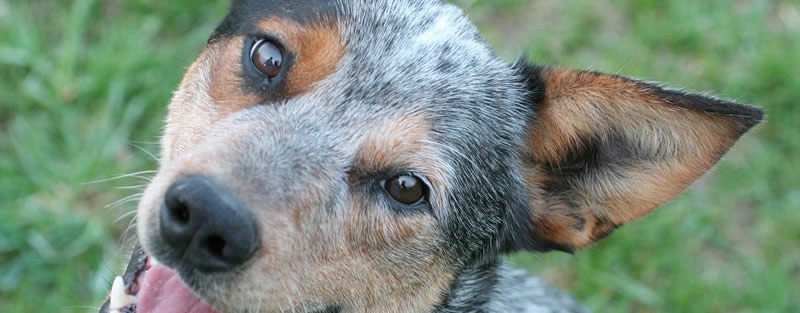
2 Simple Steps for Superior Shaping
For several years now we have been using Attention, unsolicited eye contact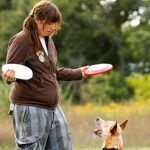 Unsolicited eye contact or Attention is a great way to hook up with a dog. If you have something the dog wants he should give eye contact in order to get access to... More, as a tool for drive management. Asking a dog to offer eye contact in order to gain access to the object or activity that trips his trigger, creates a dog that is self disciplined and performs his job thoughtfully and with care. We call this Operant DriveDrive is focus and energy applied towards work. There are many kinds of Drive: social drive, tracking drive, prey drive, bite/kill, stalking, and food to name a few. Social drive, prey drive, and... More.
Unsolicited eye contact or Attention is a great way to hook up with a dog. If you have something the dog wants he should give eye contact in order to get access to... More, as a tool for drive management. Asking a dog to offer eye contact in order to gain access to the object or activity that trips his trigger, creates a dog that is self disciplined and performs his job thoughtfully and with care. We call this Operant DriveDrive is focus and energy applied towards work. There are many kinds of Drive: social drive, tracking drive, prey drive, bite/kill, stalking, and food to name a few. Social drive, prey drive, and... More.
Many dogs get very high when working for cookies and clicks. Some go over threshold just from the act of working or opportunity for work. If you’ve worked on teaching a handstand and seen the rabid bucking bronco act, you totally know what I mean…
Eaten Up by Drive
Last week while working Hops on a handstand, he started to go all rabid bucking bronco – snorting, whining, twitching – it was not only hard to work with him, but it was hard to watch. He was getting eaten up by his arousal, and as long as I continued marking and reinforcing, this highly aroused state was going to become the norm making a handstand unlikely, ruining the concept of the handstand, and setting a trend of over aroused-work. It doesn’t take long for that to get away from you.
I think this is fairly common for clicker trainers. I’ve seen it many times, done it myself as well. It’s part of the reason that some seemingly simple behaviors can take months to create. It is responsible for much of the frustration that positive trainers experience. 2 simple steps are all that’s required to avoid this situation.
Knowing is Half the Battle
The first step towards fixing this is realizing that this kind of hyper performance is not healthy and desirable. This is no small task, by the way. It’s really easy to mistake a high rate of reinforcement with manic performance of behaviors. If manic performance of behaviors is the common thread in your shaping sessions, as I’m sure it is for many trainers out there, then your dog is going to get classically conditioned to go over threshold at the mere presence of a clicker making it hard to shape behaviors.
Attention Creates Opportunity
The second step is to put eye contact between each instance of the behavior so it is Attention that creates the opportunity to perform a skill or a cookie. When offered eye contact is the gateway to interaction and is reinforced with action or a cookie, the dog will offer it during work. It will serve to center and ground him and keep him not only focused on the task at hand, but focused on working with you.
With Hops, as soon as I got eye contact offered between reps during our handstand session the crazed bucking Border Jack beast disappeared and I was left with a hard working young man.
Just put eye contact between reps in your shaping sessions and watch your dog settle in for some good honest work. Give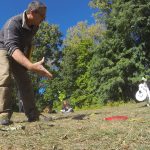 The Give is a retrieve to the hand. A cued Give is a foundational skill that is not super useful in the actual performance of disc dog freestyle, and has huge applications for... More it a shot!
The Give is a retrieve to the hand. A cued Give is a foundational skill that is not super useful in the actual performance of disc dog freestyle, and has huge applications for... More it a shot!
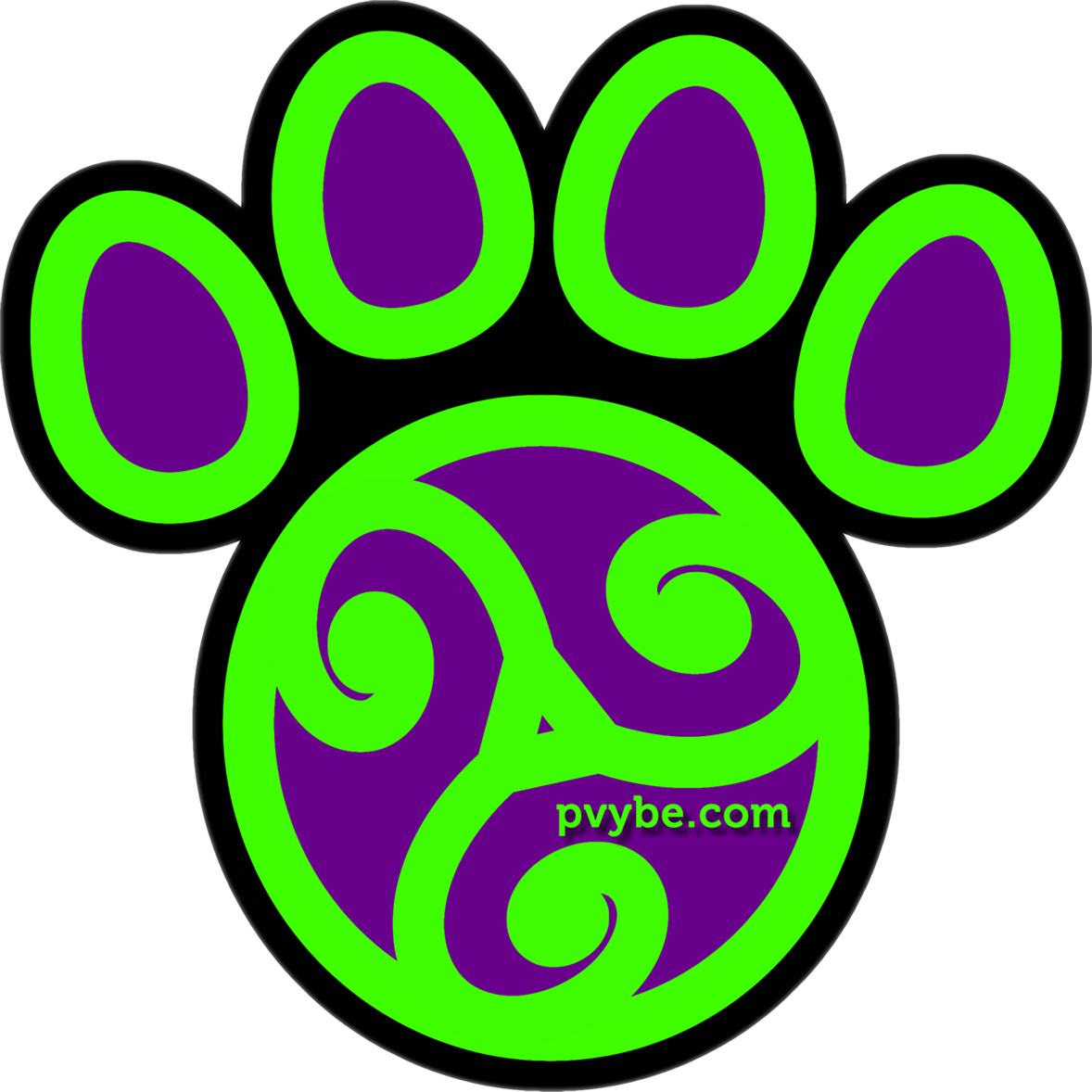


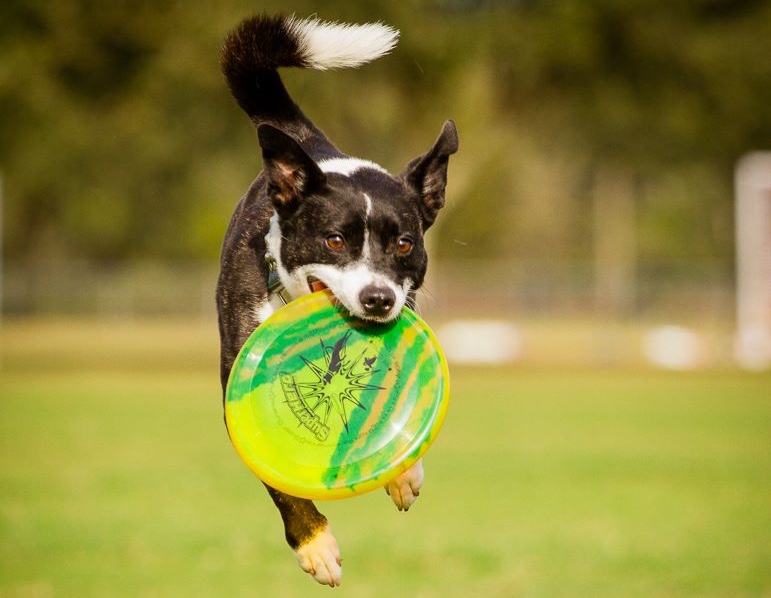
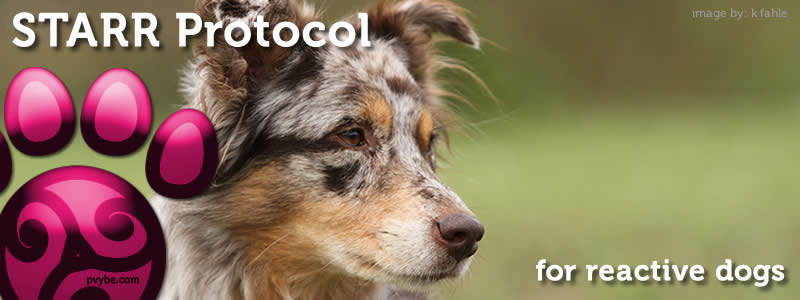
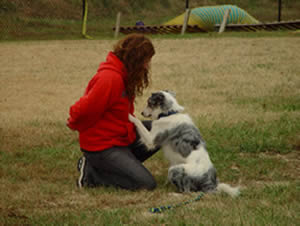
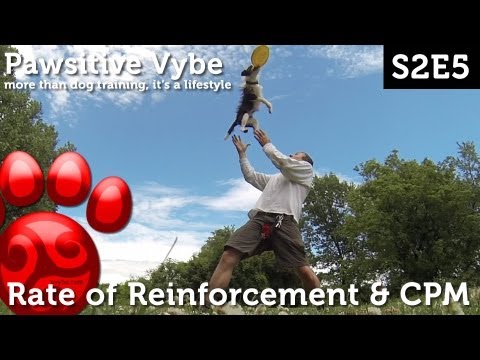

Ron, do you then have a cue you use to tell the dog to offer the behavior again after the eye contact? It seems to me like eye contact between each rep would interrupt the flow of free shaping. Won’t the dog forget what he was doing before? Or get stuck in eye-contact mode? Or does rewarding eye contact periodically just slow the dog down enough so that he is thinking about what he’s doing? Maybe I’m just not getting it because I don’t have the rabid bucking bronco shaping dog. Elo is very methodical and Jun is just an airhead.
If the skill is already on cue, I’d use that cue.
I actually have thought of creating an ‘offer it’ cue – a generic cue for trying a behavior, but I don’t think it’s necessary.
I don’t think the dog forgets, but there is a ton of baggage that is dog specific and handler’s technique specific – so it’s possible. I also think that ‘eye contact mode’ happens with dogs that wind up all wound up as they try to figure out that the handler wants – focused like a laser on replicating that behavior – a little practice and some good handling and they wind up just slowing down and thinking, as you mentioned in your comment, Tania. They also wind up looking to the handler before offering which is really nice if you do a lot of freeshaping.
It’s good that you have a calm dog when shaping. I think you might find that Jun winds up a little less airheaded if she’s got a goto behavior that can serve to anchor the session.
This might work with the rabid Rocket! Clicker sounds just intensify his maniacal “trying everything to get attention” mode. Then comes the howling & whining & barking. Jack has nice eye contact which is odd because it was not enforced with him.
Thanks Ron! Love reading your posts.
Good Job Mickey!
Let us know if this settles the rabid Rocket down a bit.
Peace~